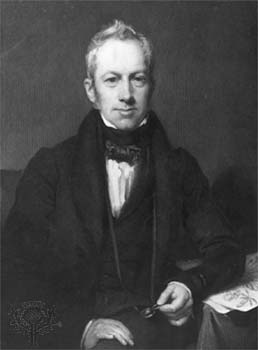Establishment of the family

Gesneriaceae was one of the last major families to take on its present taxonomic form. Originally two separate families were recognized: the New World “Gesneriaceae” (formally established by De Candolle 1816), and the Old World “Didymocarpaceae” = “Cyrtandraceae” (established almost at the same time by D. Don 1822 and W. Jack 1823, respectively). In 1839, the famous British botanist Robert Brown united the two families into a single one and this was from then on universally accepted.
First treatments of the family
Bentham (1876) was the first to publish an overall account of Gesneriaceae in the new, wide sense. C.B. Clarke (1883) wrote an important revision of the Old World “Cyrtandreae”. Fritsch (1893/94) was the first to present a detailed revision of the whole family, recognizing subfamilies, tribes and subtribes.
The classification of Burtt (1963)
B.L. Burtt, from the Royal Botanic Garden Edinburgh, presented a new classification of Old World Gesneriaceae in 1963. He recognized that this group (which he referred to as subfamily Cyrtandroideae) shares a conspicuous and uncommon feature: the anisocotylous seedling. He distinguished five tribes: Cyrtandreae, Trichosporeae, Didymocarpeae, Klugieae, and Loxonieae. Additional tribes (Saintpaulieae, Rhynchotecheae, Ramondeae, Titanotricheae) were suggested later by Russian and Chinese authors (Ivanina 1965, 1967; W.T. Wang 1990, 1991, 1998), but were not generally accepted. Though exhibiting an Old World distribution, Burtt (1963) did not include the Australian and SW Pacific genera Fieldia, Lenbrassia, Negria, Coronanthera and Depanthus in subfamily Cyrtandroideae. On grounds of the isocotylous seedlings these were referred to tribe Coronanthereae, and together with the temperate South American tribe Mitrarieae (Mitraria, Sarmienta, Asteranthera) attributed to the New World Gesnerioideae.
The classification of Wiehler (1983) and Burtt & Wiehler (1995)
In 1983, the German-American botanist Hans Wiehler united the tribes Coronanthereae and Mitrarieae and raised them to a subfamily of its own (Coronantheroideae). The morphological character linking its genera is that the nectary is adnate to the ovary. Based on these findings, Burtt & Wiehler (1995) published a classification covering the whole family and subdividing the three subfamilies into tribes:
- Coronantheroideae, comprising the single tribe Coronanthereae
- Gesnerioideae, comprising the tribes Gloxinieae, Episcieae, Beslerieae, Napeantheae, and Gesnerieae
- Cyrtandroideae, comprising the tribes Klugieae, Cyrtandreae, Trichosporeae and Didymocarpeae. The latter and largest group comprised 64 genera, simply arranged in an alphabetical order.
The advent of cladistics in Gesneriaceae research (starting with Boggan 1991) and molecular systematics (starting with Smith & Carroll 1997) provided a novel set of data and showed that the former morphology-based classifications were in need of considerable modification.
The classification of Weber (2004).
A new but rather unorthodox classification was then proposed by the present author (Weber 2004). This was a mixture of formal and informal groups and subgroups, taking the molecular data then available into account, but providing no formal system. Four major informal groups were recognized:
- “Coronantheroid Gesneriaceae”. This comprises the genera of the traditional tribes Coronanthereae and Mitrarieae and Wiehler’s subfamily Coronantheroideae, respectively
- “Gesnerioid Gesneriaceae”. This group corresponded to traditional subfamily Gesnerioideae and was classified into the traditional tribes Beslerieae, Napeantheae, Gloxinieae, Episcieae, Sinningieae, and Gesnerieae
- “Epithematoid Gesneriaceae”. This corresponded to tribe Epithemateae sensu Burtt & Wiehler (1995; an amalgamation of the traditional tribes Klugieae and Loxonieae), of traditional subfamily Cyrtandroideae. No subdivision was suggested
- “Didymocarpoid Gesneriaceae”. This corresponded to traditional subfamily Cyrtandroideae except tribe Epithemateae, and included tribes Didymocarpeae, Trichosporeae and Cyrtandreae sensu Burtt & Wiehler (1995). Subdivision of the large group was by informal groups such as “Basal Asiatic + European genera”, “African genera”, and “Advanced Asiatic genera”, the latter being further subdivided into “Genera with twisted capsular fruits” and “Genera with straight capsular or indeshiscent fruits”
This simple grouping may still serve as a rough attribution of gesneriad taxa and is used, where appropriate, in some of the previous sections.
